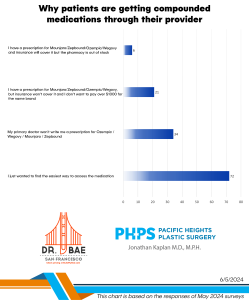
Like movies? Biofilm is the most important film you’ve never heard of! Biofilm is the technical name for the slime that bacteria secrete. It’s a problem in the case of breast implants and fillers. We generally worry about blatant infections from bacteria but in the case of implants and fillers, biofilm can cause problems other than a frank infection. Curious? Keep reading.
Biofilm and how it affects you
Obviously your doctor knows about the risk of infection anytime they inject a filler into your face or place a breast implant during breast augmentation. That’s why the doctor cleanses the skin with alcohol (in the case of fillers) or betadine (in the case of breast augmentation). But with billions and trillions of bacteria on the skin, it’s not always possible to get rid of 100% of the bacteria.
That doesn’t mean we just give up when it comes to cleanliness and good surgical technique. That’s still critical. We just have to understand the potential risks. Even if there are a few bacteria still present during surgery or non-injectable treatment, your body does a pretty good job neutralizing most of them. However, some bacteria can attach to the filler or implant after placement. The bacteria then secrete a slime that all together, represents biofilm.
With biofilm present, it’s harder for antibiotics to kill the bacteria with their protective slime covering. This doesn’t result in infection. In the case of fillers this can result in granulomas and nodules. In the case of breast augmentation, this can result in a thickening of the scar tissue around the implant. If the scar tissue around the implant is thick enough to distort the implant and breast, that’s capsular contracture.
So how do we reduce the risk. First let’s discuss fillers. As the image above shows, the more needle sticks into the skin to inject fillers can potentially bring more bacteria from the skin surface and into the filler. By using the blunt cannula technique, your doctor only makes one needle stick, rather than many. In other words, the treatment can be performed with one entry point rather than five or ten. You can see an example of the blunt cannula technique in the video below.
Blunt cannula technique video
In the case of breast augmentation, protecting the implant from any skin bacterial contamination is beneficial. For example, inserting the implant without the implant touching the skin or covering the nipple, and it’s bacteria hidden within the nipple milk ducts, can help. You can see an example of “nipple shields” in the video below.
Nipple shields video
To check pricing on any of these procedures from Dr. Kaplan, click here.
Click here for the original blog post written by Dr. Jonathan Kaplan for BuildMyBod.




